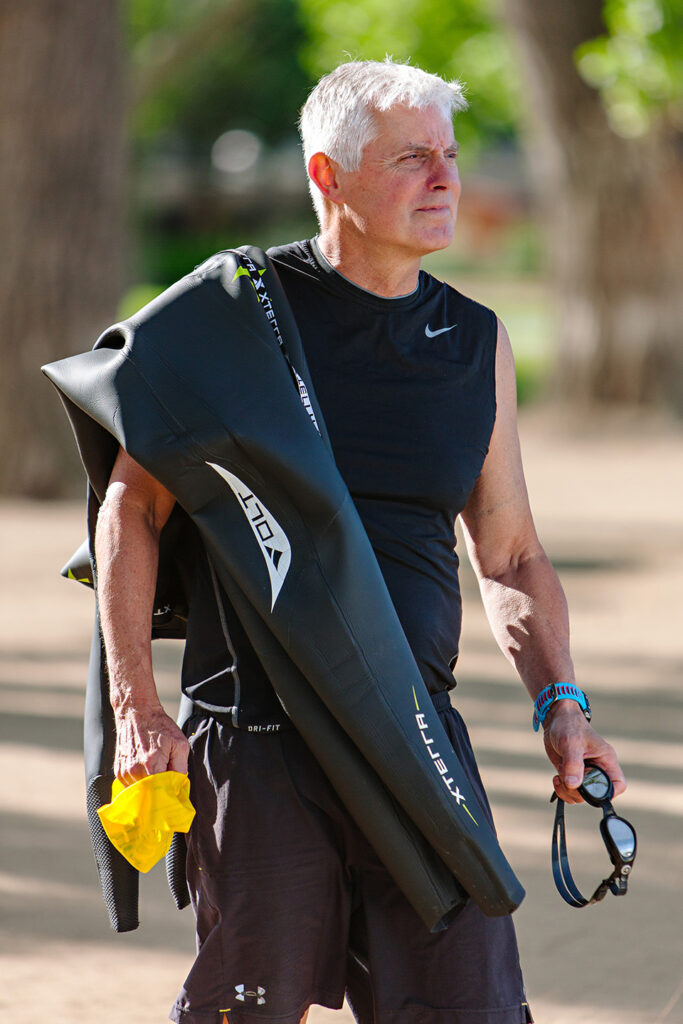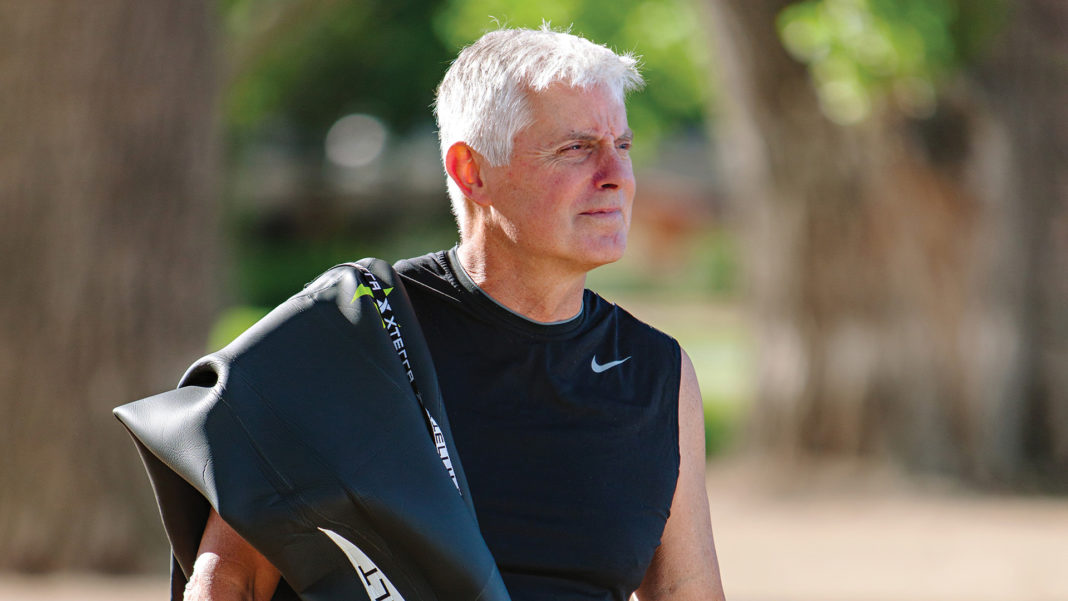Nothing quite like a pandemic for us all to consider new forms of outdoor activities that can be done without a lot of people or exercise facilities. Open water swimming has floated to the top of many people’s list almost everywhere. With so many people opting to try out lakes, rivers, and oceans over pools, many of which have imposed all kinds of restrictions, it might be a good time to remind swimmers of some safety best practices.
To stay safe in open water versus a pool swim, there are many important differences to consider. Many of these become quickly evident as unsettled anxiety when stepping into a broad watery expanse, even among seasoned pool swimmers.
Considerations for competent swimmers
- Open water swims are not temperature-controlled like most pools are. A pool may be a comfortable 26-28 C, while open water (lake, river, ocean) can be 10-15 C colder. In this case, swimming with a wetsuit may be strongly recommended, especially if you are thinly built or expect to be immersed continuously for more than 15-20 minutes. Even if the open water temperature reaches a comfortable 22 C, this temperature is a full 15 C colder than your body core temperature, enough to risk hypothermia with sustained exposure, especially in thinner people. Since we all have different builds and different tolerances to the cold, every swimmer needs to recalibrate their cold exposure, especially if not wearing a wetsuit.
- Cold water exposure, especially to the face and neck, is also known to cause a number of cardiac reactions in susceptible people. The macho desire to run and then dive into cold water without acclimatizing first is not a great idea. Walk in, splash water on your face. Ease into the colder environment, especially early in the open water swim season.
- Most open water swims are often too deep or too murky to see bottom, which by itself is unsettling for some swimmers as they worry what is in the water. Regardless of if you can see bottom, there is no line underneath you (as there is in a pool) to guide you, meaning that your ability to swim straight will require a new skill: sighting. To take on virtually any open water swim, this is a must-have skill, which includes an assessment of the landmarks that will guide your swim, be it buoys or land-based structures.
- Swimming alone in open water is generally a bad idea unless you are intimately familiar with the water you are swimming in. Learning about the currents, the tides, the undertows, drop-offs, possible boat traffic, and underwater hazards is usually best done with someone with intimate knowledge of the water you are contemplating swimming in. Learn your open water intimately, and consider how the weather forecast can change everything, including your risks when winds and waves can challenge even the most experienced open water swimmer. Some days you will need to shelve your best laid plans to swim open water. Can you say: “Not today?”
- Wearing a brightly coloured swim cap and using a personal swim buoy are great strategies to be seen by others who may be monitoring your swim, and by those in watercraft who may not be expecting to see a swimmer off their bows.
Once familiar and comfortable with the many variables that present themselves in rivers, lakes, and oceans, open water swimming can be a meditative, relaxing experience. No two swims are ever the same, since the water and the weather offer new variables every day. Think about common-sense safety first, and then reap the benefits of a sport you can do for a lifetime.

Open water swimming gear
Open water swimming doesn’t have to be an expensive sport. Open water access is almost always free, and the equipment needed can be easily procured for a few hundred dollars. Here is a list of the most useful/recommended gear for open water swimmers:
- Goggles
This is another important piece of equipment that needs to fit well and be relatively free from too much wear and tear. It should not leak and should allow to see well both directly and peripherally. Since we all have different faces, find the brand that fits best on your face, without any pressure points. Remember that it is harder to adjust goggles in deep, open water than it would be in the pool.
In open water, other goggle features are also potentially important. Like sunglasses, if they are tinted or reflective, they can diminish glare on sunny days, which can be critical when trying to sight for a buoy or an object on shore. - Swim cap
You should always wear a brightly colored swim cap when swimming in open water, first to be seen, and second to keep your head warm, since you can lose a lot of heat through your head. When the water is under 20 C, a silicone cap is thicker (and therefore more insulative) than a latex cap; If the water is under 15 C, consider double-capping (two silicone caps, with the outer one being brightly colored, or wearing a neoprene cap under your swim cap. - Tracking and/or timing device
If you are keen to understand your swim distance and swim speed, get yourself a tracking device, such as a Garmin product, most of which now work well in water. For most others, an ordinary Timex watch can be useful, not only to time your swim route, but also to keep track of how long you have been in water, which may be critical information on colder swims. - Wetsuit
Unless you are in the tropics, this is your most important single piece of equipment. It will keep you well insulated from the cold to allow longer swims, and will provide you additional floatation, enough to make it all but impossible to dive even a few feet down (this is why scuba divers need weight belts). The wetsuit must fit you well and should not have any significant tears in it. It is also critical that you feel comfortable in a wetsuit, since many can feel anxious with the feeling of chest compression if it is even slightly too small. Keep in mind that wetsuits that are made for swimming are different from suits made for kiteboarding or waterskiing, which are not usually built for shoulder flexibility or minimal water resistance. - Personal Swim Buoy (PSB)
In recent years, PSBs like the Swim Buddy have become very popular with open water swimmers (and increasingly in open water swim races), giving them a feeling of added safety knowing that they can be more easily seen, whether by boats, other swimmers, or supporters nearby. They can also provide a resting platform on a long swim. They are brightly colored (orange, pink, green and yellow are common colors), and vastly improve the visibility of an open water swimmer, who may be hard to see while mostly submerged among waves in a black wetsuit. Many PSB models even have a dry bag within them, allowing personal items (T-shirt, sandals, towels, car-keys, etc.) to be carried along on a point-to-point swim.
Photography by Jon Adrian
Read This Story in Our Outdoor Summer Digital Edition
Get outside and play!
We’ve covered DIY Bike Maintenance, Wildlife Travel, Open Water Swimming, Ultramarathon Training, Paddleboarding, Family Adventures, and Dogs and a Cat to watch on Instagram! Work out with Canada’s Top Fitness Instructors and be inspired by our Athletes with IMPACT.

















